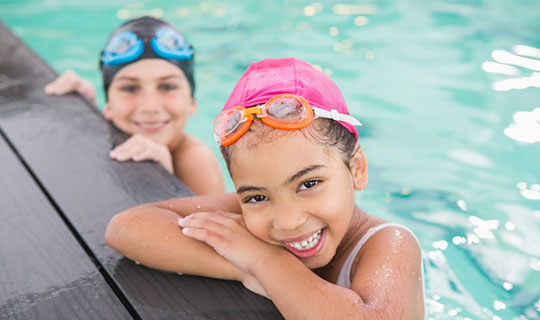
Many people look to beat the summer heat with a fun and refreshing dip in a pool, ocean, or lake, but it is important that both children and adults understand the risk of drowning. The CDC reports that there are around 4,000 fatal unintentional drownings and 8,000 nonfatal drownings per year. Ernest Leva, MD, FAAP, Professor of Pediatrics and Director of the Division of Pediatric Emergency Medicine The Bristol-Myers Squibb Children’s Hospital, an RWJBarnabas Health facility, and Rutgers Robert Wood Johnson Medical School, offers his tips to help you keep your family safe this year:
- Don’t swim alone.
- Wear a life vest when fishing, boating, or if you’re an inexperienced swimmer.
- Don’t drink alcohol prior to swimming or spending time near bodies of water.
- Don’t swim when lifeguards aren’t present, especially if you or a loved one are inexperienced swimmers.
- While at the beach, be mindful of any rip current warnings and always listen to the lifeguards' instructions.
According to the CDC, drowning is the leading cause of death for children ages 1-4 and second leading cause of unintentional injury death for children ages 5-14. While the aforementioned tips are important to keep in mind, there are a number of other precautions specific to children that can help prevent drowning.
- Keep an eye on children in or near a body of water
- Completely fencing in a backyard pool reduces a child’s risk of drowning by 83%. It is best to fence the pool on all four sides and not use the house for one side.
- Put children in a life vest
- Enroll your child in swimming lessons
The importance of prevention cannot be overstated but it’s also important to be able to identify the signs that someone is drowning:
- They’re quiet – this is especially true of children
- Hyperventilating or gasping
- Remaining upright in the water, not using their legs
- Their eyes are glassy, unable to focus or closed
- Their hair might be covering their forehead or eyes
- Head is low in the water, and may be tilted back with the mouth open
- They don't seem in distress – they may look blank, or can't answer whether they're alright
- They're trying to roll over on their back, unsuccessfully
- They look like they’re climbing an invisible ladder
- They're trying to swim in a particular direction, but making no forward progress
Additionally, two less common but still extremely dangerous types of drowning include:
- Dry drowning – Inhaling water, causing vocal cords to spasm and close resulting in asphyxiation. This begins to happen right away after being in the water.
- Secondary drowning – Inhaling water that gets into the lungs making it harder to breathe. This can begin right away and get worse over a 24-hour period.
Symptoms can include:
- Coughing
- Chest pain
- Trouble breathing
- Feeling extremely tired
If you suspect someone is drowning or someone is experiencing these symptoms after getting out of the water, they should seek immediate medical attention.